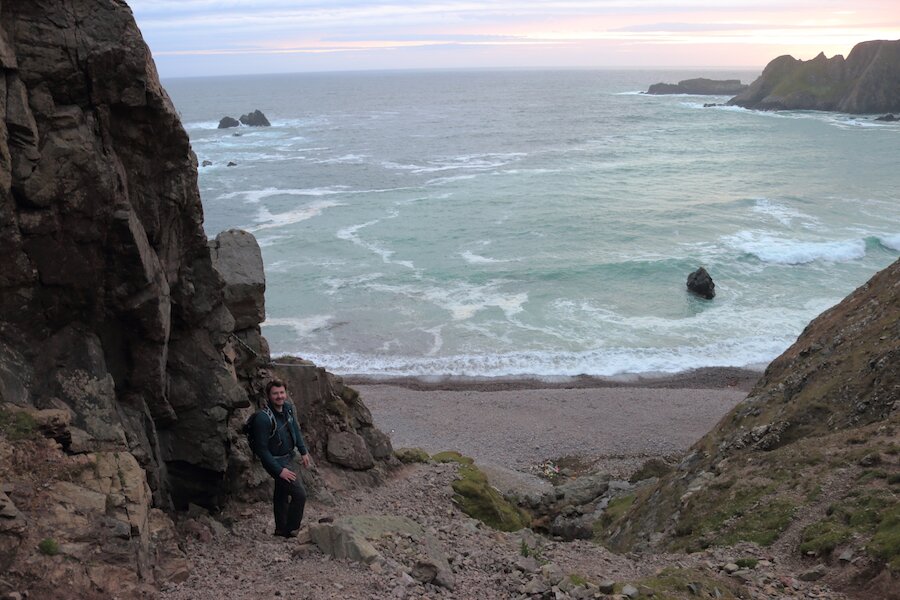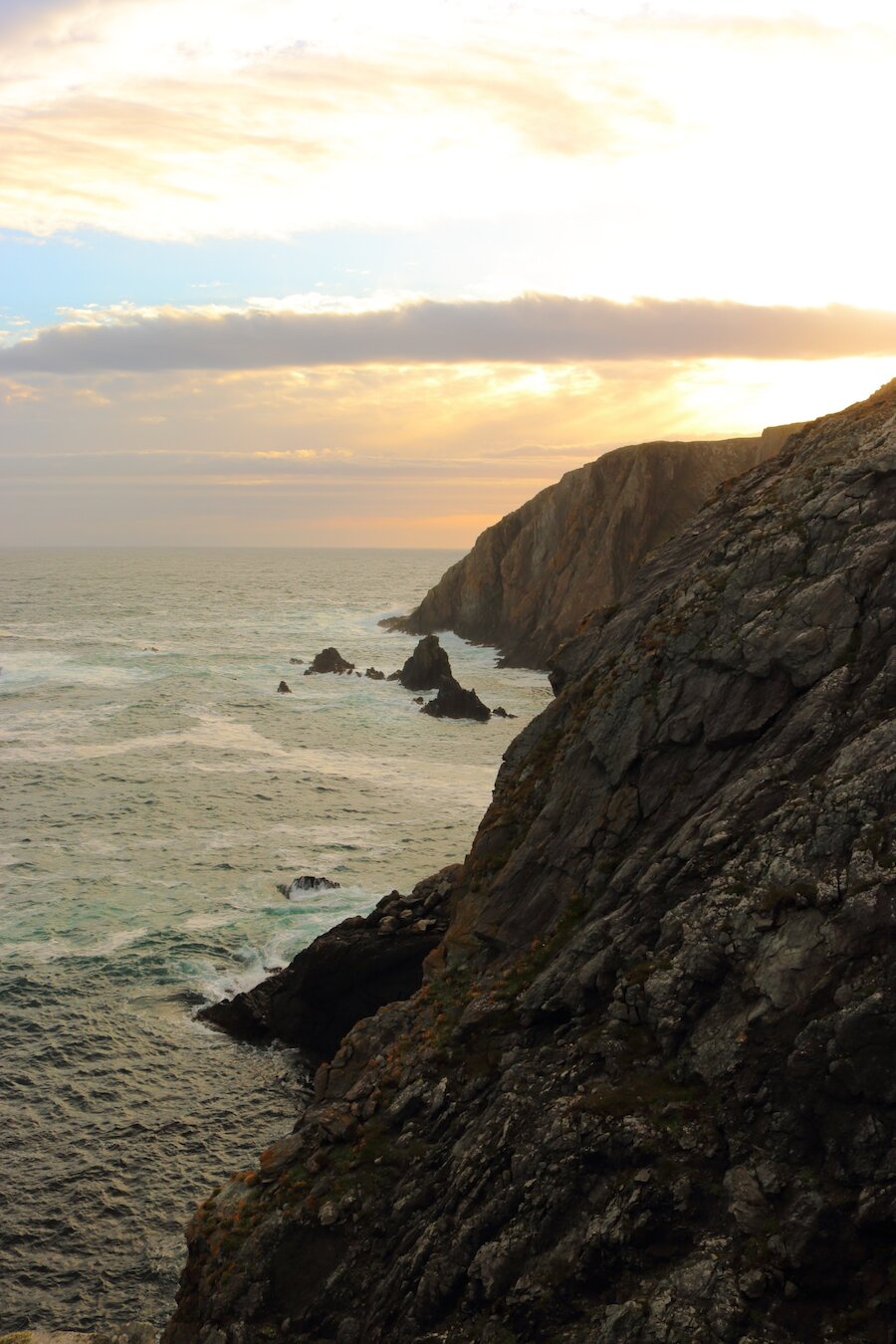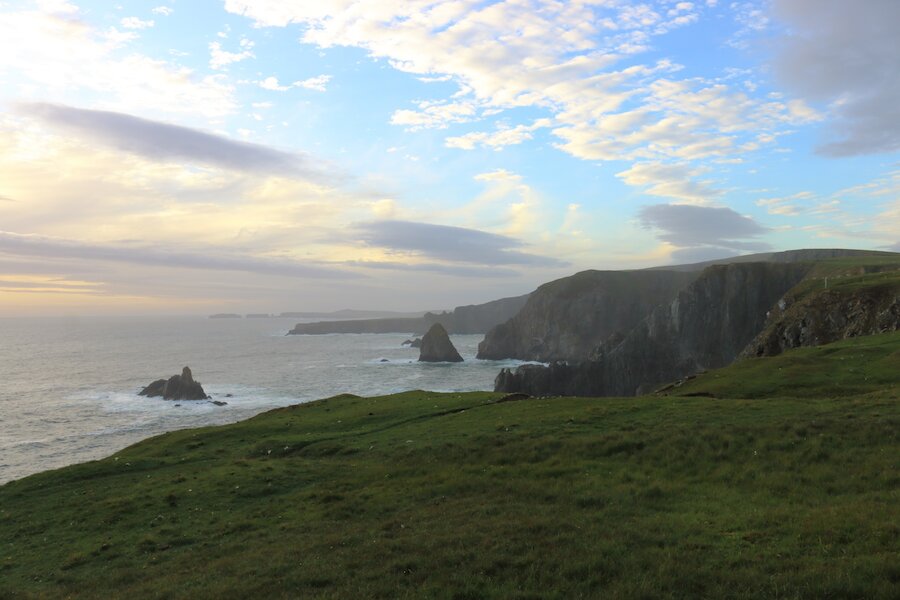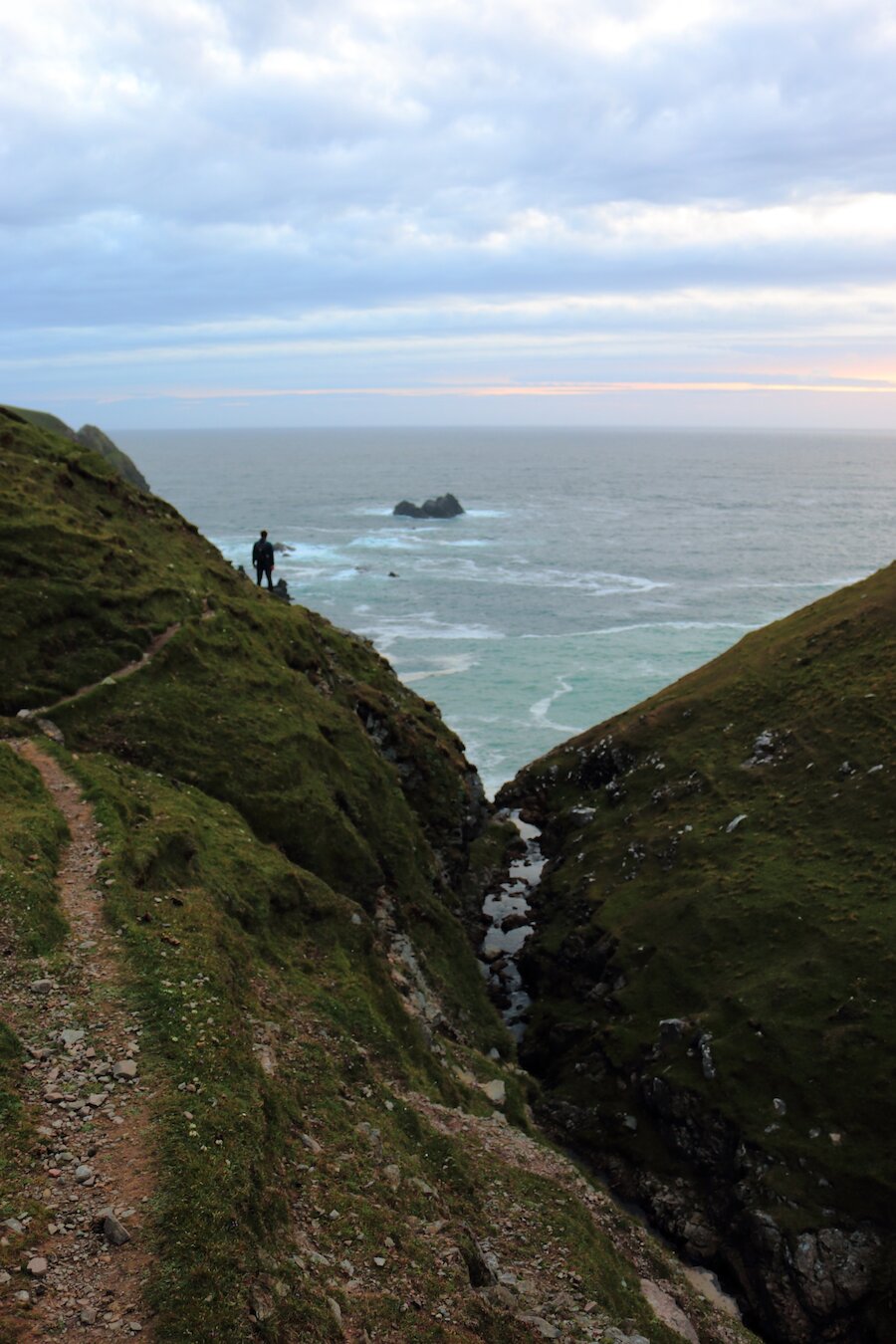For those in search of adventure, Deepdale is the perfect walk to achieve this. Deepdale is a long ayre (beach) set at the foot of some impressive, sheer cliffs in the Bay of Deepdale.
Located in Shetland’s West Mainland, the beach sits about halfway between Sandness to the north, and the Dale of Waas to the south. At the most western extremity of Mainland Shetland, this area is subject to the unbridled power of the aggressive North Atlantic.
- Walk: 5 miles (8 km)
- Terrain: Challenging, hiking trainers would be best to wear as the terrain as the path leads to the beach is challenging.
- Time: 3 hours (this allows time to enjoy the views)
To get to Deepdale, follow the A971 west towards Walls and then continue towards the Dale of Walls. Park at Netherdale or take the dirt track in the road at the left (before Netherdale) and park at the Voe of Dale (Dale o’ Waas beach). We parked at the beach and, avoiding the diving shrieks of tirricks, made our way north through an access gate and followed the cliffs to climb the headland of Mu Ness.
The Voe of Dale is one of the only suitable places in the area to draw up a boat, and at the head of the voe, above the beach, there are the remains of boat noosts (spaces used to haul up boats and secure them over winter). This was a haaf (deep-sea) fishing station in the 19th-century, with good access to rich, offshore fishing grounds.
From almost every point of this walk, Foula, our most westerly island, looks impressive on the Atlantic horizon. We followed the coastline passing impressive stacks, cliffs and geos including Coppa Wick with its spectacular natural arch and Sel Ayre (seal beach) with the Erne’s Stack that lies just offshore.
This impressive triangular-shaped rock was the Eagle’s stack. White-tailed sea eagles used to be native to Shetland, and were known as ernes, and often nested on stacks offshore. The birds were killed to extinction by people in the early 1900s because they would often kill hens or lambs. Hunting, combined with the very 19th century pastime of egg-collecting led to their demise and eventual extinction in 1918. Interestingly, the reintroduction of these into Shetland was unsuccessful, in part due to the prevalence of fulmars who spit out a foul-smelling oil that coats the feathers of the eagles, making them unable to fly. Fulmars were only introduced to Shetland in the late 19th century, and their introduction coincides with the demise of the white-tailed sea eagle.
Just beyond Sel Ayre, Deepdale comes into view, imposing and sheer; steep cliffs falling into the sea and on to the gravelly beach below. Extreme care must be taken if attempting to go down to the beach. It is possible, but is not for the faint of heart or those who suffer from vertigo!
The easiest way to get down to the beach is to follow the sheeps-gait (sheep path) along the side of the steep-sided valley carved out by the Burn of Deepdale. This will lead to a rough, rocky slope down towards the beach. Taking great care, descend the hill until you reach a rope. Use the line to navigate towards the shore.
This is a challenging climb, and the rocks are crumbly and loose. I wore stiff, hiking boots which provided poor grip – I would suggest trainers/hiking shoes.
From the beach, the top of the cliffs feel as though they are hugging in around you. Banks Head stands at an imposing 160m – an impressive height from the lower reaches of the cliffs.
Once we scrambled back to the top and had comfortably perched ourselves on the grassy slopes with a cold beer to restore some equilibrium, we were treated to an unexpected and vivid sunset as the clouds that had accompanied us on the walk parted, and the sun dipped behind the cliffs of the Bay of Deepdale.
We shortened our walk on the way back, following a more direct route back to the Voe of Dale. On the way we discovered a hidden Geocache and using the Geocache app found another one back where we started at the Dale o’ Waas beach.
This is a fantastic walk, made even better by going at night to coincide with the sunset. This route takes an hour from the Voe of Dale into Deepdale and an hour back. Allow an extra hour to either get down to the beach to explore, or soak in the sights and sounds of a Shetland summer.
For a longer circular walk see Deepdale and Sandness Hill Circular.





